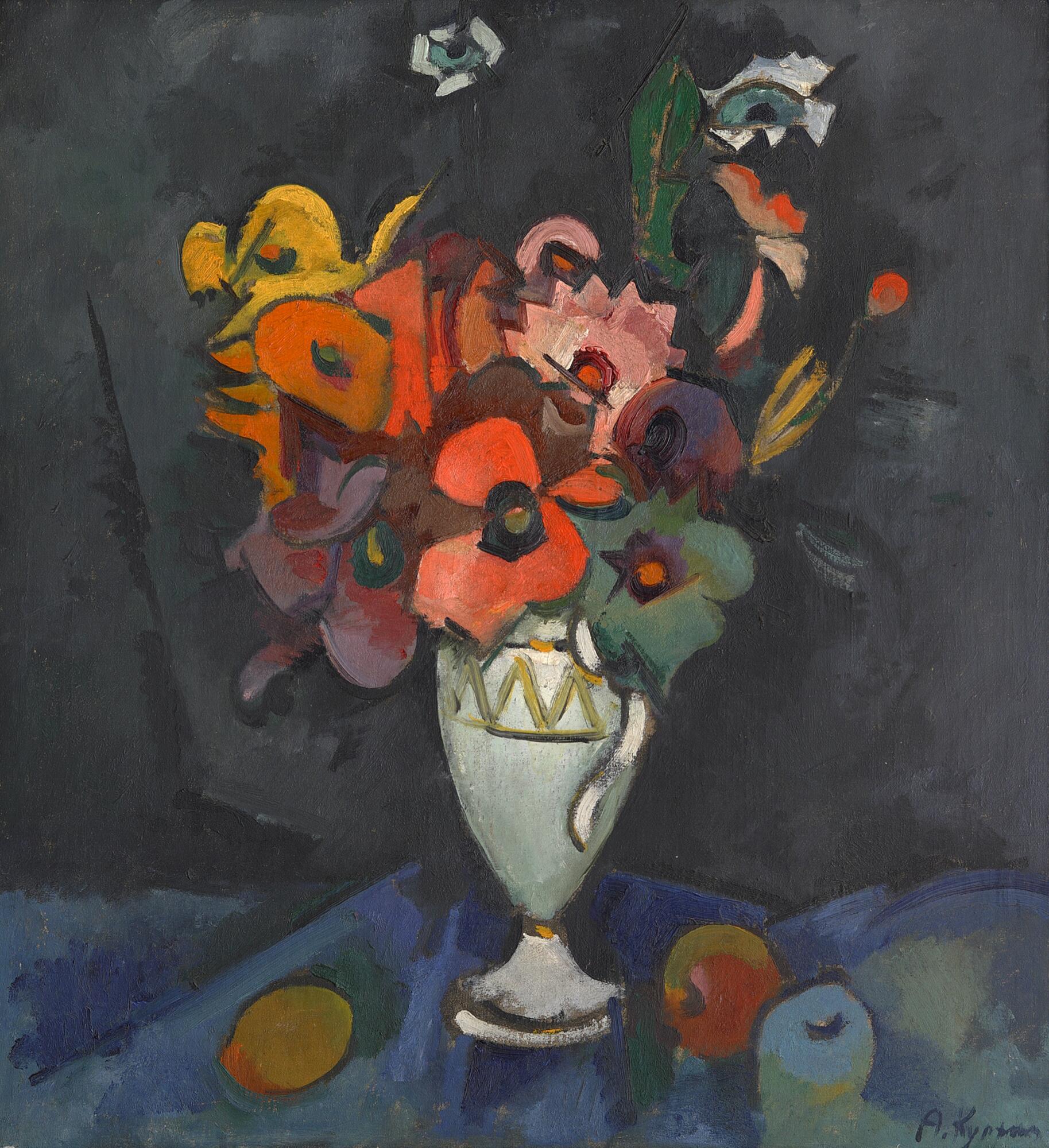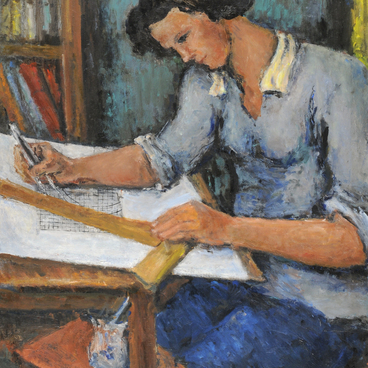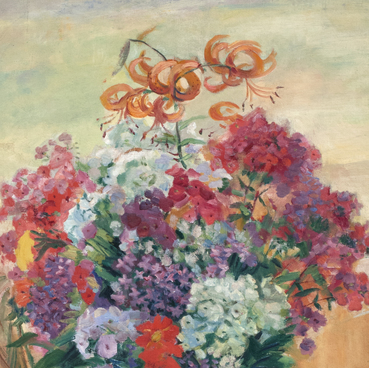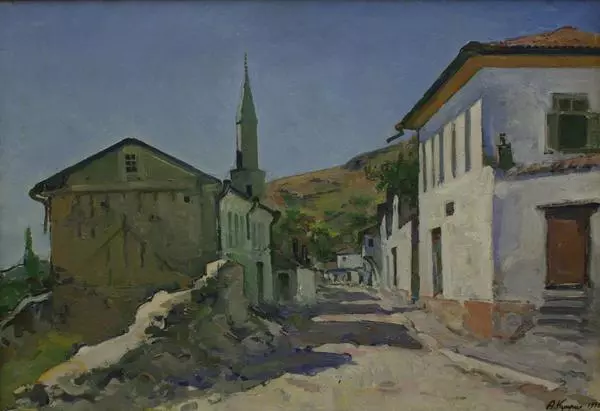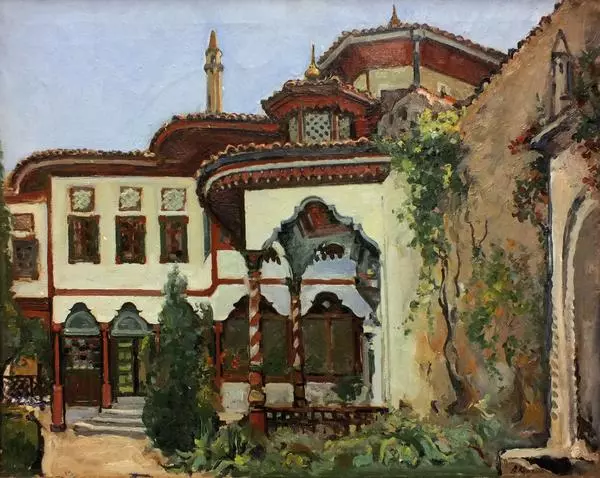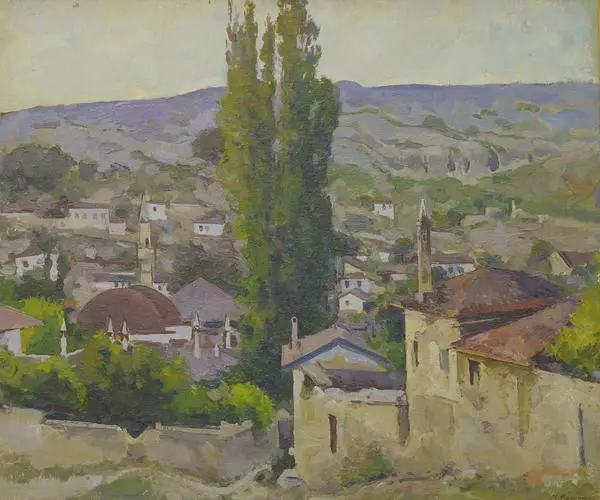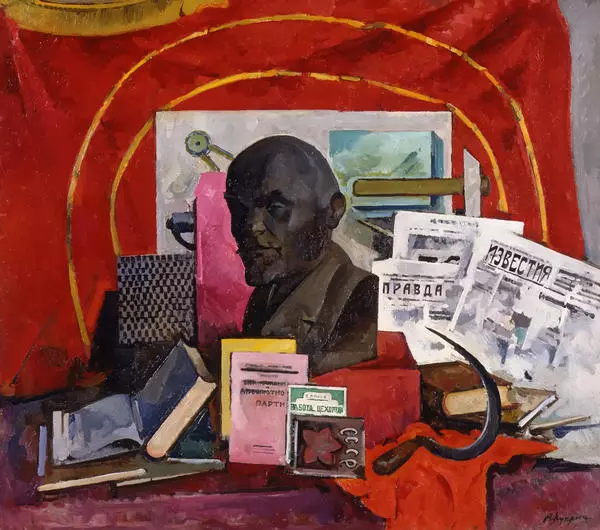By 1916-1917, Alexander Kuprin had already traveled down a fairly serious path of artistic development.
Not possessing the vigorous temperament that Mashkov, Lentulov, or Konchalovskiy all had, his art tried to sway people chiefly by using the nobility of the color palette, and the desire for strictly defined design that did not accentuate external geometricity, but the living plasticity of the forms. By the mid-1910s, Kuprin was already perceived as one of the prominent artists among the Russian avant-garde, and was one of the people who helped organize the ‘Jack of Diamonds’ movement. He survived the fascination with increased color on the Fauvist canvases, and used the sharpening of form and dynamization of composition brought by cubism, but without ruining the natural, substantive basis of things, and real spatial relations. He learned to see in a rather generalized way, focusing specifically on the color perception of natural objects.
But the craving for generalization and simplified form, and the desire to subordinate form to color, by no means causes him to distort the objective essence of the things depicted. A vivid example of that is his work Flowers (1916). Against a background that is conditionally dark, a white vase with a bouquet of paper flowers can clearly be seen. There are two apples to the right of it, and a lemon to the left. Their color activity is markedly weakened. Conversely, it is emphasized in the bouquet. The painting of artificial colors - yellow, different shades of red, lilac, green - makes them luminous. They are just what illuminates the shallow space - what is perhaps the only space - emphasized by the corner of the table. The lack of a clearly defined environment only enhances the sense of self-isolation inherent in this clearly cropped composition, snatched out of the semi- darkness. And the mysterious glow of colors, as if flashing from within, brings a pent-up tension into the microcosm of the still life.
The artist willingly concocted certain objects for his still lifes, as if avoiding the randomness and unpredictability of ‘living’ nature. In the still lifes, paper flowers and wax fruits are often ‘strike poses’ for him, along with the most common household items. His musical talent manifested itself in the rhythmic coherence of the compositional structure, in the richness of color nuances and their harmonious consistency, in the picturesque sophistication and intrinsically valuable decorativeness. And, at the same time, in the intense, colorful accord in Flowers (1916) there is a restrained force, the very ‘volitional tension of inner vision’ that the artist spoke about, and which is present in his best still lifes from that time. Of course, this means in comparison with complex still life compositions. Kuprin’s Flowers (1916) seems like a sketch work, if this concept can be applied to “Jack of Diamonds” painting at all. Here, the construct is less deliberate, but the burst of emotional energy is noticeable, and the natural impulse, freedom, and lack of self-consciousness in the painting are more palpable.
But the craving for generalization and simplified form, and the desire to subordinate form to color, by no means causes him to distort the objective essence of the things depicted. A vivid example of that is his work Flowers (1916). Against a background that is conditionally dark, a white vase with a bouquet of paper flowers can clearly be seen. There are two apples to the right of it, and a lemon to the left. Their color activity is markedly weakened. Conversely, it is emphasized in the bouquet. The painting of artificial colors - yellow, different shades of red, lilac, green - makes them luminous. They are just what illuminates the shallow space - what is perhaps the only space - emphasized by the corner of the table. The lack of a clearly defined environment only enhances the sense of self-isolation inherent in this clearly cropped composition, snatched out of the semi- darkness. And the mysterious glow of colors, as if flashing from within, brings a pent-up tension into the microcosm of the still life.
The artist willingly concocted certain objects for his still lifes, as if avoiding the randomness and unpredictability of ‘living’ nature. In the still lifes, paper flowers and wax fruits are often ‘strike poses’ for him, along with the most common household items. His musical talent manifested itself in the rhythmic coherence of the compositional structure, in the richness of color nuances and their harmonious consistency, in the picturesque sophistication and intrinsically valuable decorativeness. And, at the same time, in the intense, colorful accord in Flowers (1916) there is a restrained force, the very ‘volitional tension of inner vision’ that the artist spoke about, and which is present in his best still lifes from that time. Of course, this means in comparison with complex still life compositions. Kuprin’s Flowers (1916) seems like a sketch work, if this concept can be applied to “Jack of Diamonds” painting at all. Here, the construct is less deliberate, but the burst of emotional energy is noticeable, and the natural impulse, freedom, and lack of self-consciousness in the painting are more palpable.
